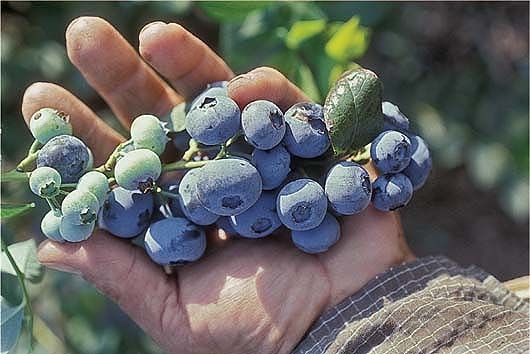
UC ANR researchers aim to minimize water use in blueberries

The story featured Darren Haver, a UC ANR Cooperative Extension advisor in Orange County and director of the UC South Coast Research and Extension Center in Irvine. At the center, blueberries are being grown with varying amounts of water to compare yield and quality. Because of the drought, farmers need to know how to minimize water use while maintaining a viable business.
"Part of my job as an advisor is to take that information and put it in a format that a farmer could use or the general public could use," he said. "It's my job to distill it down."
The story also notes that drought-tolerant dragon fruit are under study at that at the South Coast REC.
"We need to find more crops like this," Haver said.
Other drought news:
Diversification: A Response to Drought
Richard Jones, Growing Produce, April 27
Growers must prepare to make changes, especially if their sole focus is high-value crops, said Samuel Sandoval, UC ANR specialist in water resources management at UC Davis. “We're seeing many growers put a lot of investment risk on a resource — water — that's very unreliable. We need to think ahead of the curve and find systems that are more flexible,” he says. Sandoval's suggestion: diversifying with both permanent and annual crops.
Your water footprint is bigger than you realize
Laura Bliss, The Atlantic CityLab, April 28, 2015
In the developed world, every bite of food, every mile we drive, every light switch we flip relies on water. The average American has a "water footprint" of 2,220 gallons per person, per day. "The numbers are pretty accurate," says Doug Parker, director of the UC Agriculture and Natural Resources California Institute for Water Resources. "But my question is, what do you do with it? If I'm interested in solving the drought in California, using less energy from power plants doesn't really matter because that water can be used downstream by a farmer."
